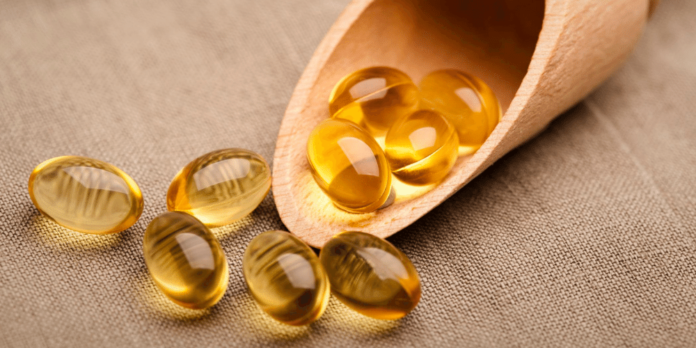Vitamin E is a fat-soluble antioxidant that helps to rejuvenate your skin and may also be effective at reducing UV damage in skin. While vitamin E oil is very thick, it can make an excellent moisturizer for dry, patchy areas of skin.
Vitamin E is normally provided to the skin through the sebum. Topical application can help supply the skin with vitamin E and may provide specific vitamin E forms that are not available from the diet. Ahead, learn how to use vitamin E capsules directly on to the skin.
Benefits of Vitamin E Capsules for Skin
Here are the several benefits of applying Vitamin E oil on your skin:
1. Vitamin E for Sun Damaged Skin
The primary role of vitamin E in the skin is to prevent damage induced by free radicals. Studies have shown applying vitamin E to the skin can prevent or reverse damage caused by sun exposure and limit the production of cancer-causing cells.
However, wearing sunscreen and avoiding direct sun exposure remain the best strategies for protecting the skin.
2. Vitamin E for Soft Lips
You can simply cut one Vitamin E capsule open and apply it to your lips. Vitamin E boosts circulation and may help generate new skin cells, making your dry lips softer. Alternatively, you can also mix it with your lip balm. And if you also have dark lips, regular usage of the oil may help lighten them as well.
3. Vitamin E for Dark Circles
Every night before going to bed take 2-3 drops of vitamin E oil and gently massage your under-eye area with it. Leave it for the rest of the night.
Using vitamin E oil and almond oil together on the under-eye area can help to lighten dark circles and treat puffy eyes, due to the combination of anti-inflammatory and antioxidant properties that these two oils contain.
4. Vitamin E for Dry Skin
Since Vitamin E is heavier in texture, It restores the lost moisture, and this is why it works best for dry skin. The moisturizing benefits of vitamin E oil may also treat fine lines and wrinkles caused by dry skin, and help the skin look more youthful.
Problem areas that are very dry, such as the cuticles and elbows, knees, might also benefit from topical application of vitamin E oil.
5. Vitamin E for Stretch Marks
To reduce the appearance of stretch marks, apply it regularly on the area and rub gently. Combining vitamin E with other skin-rejuvenating essential oils may give your stretch mark treatment regimen a boost.
6. Vitamin E for Skin Cleansing
Vitamin E oil is a heavy emollient. It removes dirt from your pores to give you a refreshed and smooth appearance.
For oil cleansing, take one tsp of vitamin E oil in the palm of your hand. Use your fingers to gently massage the oil into the skin for a minute or two to remove impurities. Use a damp, warm washcloth to gently wipe away the oil. Pat dry with a towel and apply moisturizer if you feel you need it.
If you’re prone to acne or oily skin, you may want to follow the double cleanse method. You’ll still get the cleaning and hydrating benefits of the oil cleanse, but you won’t have to worry about any oil being left behind to clog your pores:
• Follow the steps above for a basic oil cleanse.
• Wash with a mild face wash. Pat dry with a towel and apply moisturizer or hydrating serum if you feel the need.
7. Vitamin E for Hyperpigmentation
Studies show that hyperpigmentation may be only moderately affected by using topical vitamin E oil alone. The most effective way to use vitamin E to treat hyperpigmentation is to pair it with vitamin C as it helps your skin produce more collagen while inhibiting the formation of melanin.
PLEASE NOTE
» Before using vitamin E oil, do a patch test. Apply a small dab of the oil to an area that is not highly visible. Wait 24-48 hours. If no reaction develops, it is probably safe to use.
» Experiment with both straight vitamin E gel from a capsule and an expertly formulated E-infused skincare product to see what works best for your skin.
» If you have dry skin or eczema, you can use it thrice a week. If you have normal to oily skin, use it not more than once a week.
» Vitamin E is usually not advisable for supersensitive, extremely oily, or acne-prone skin.
You may also like
• Hydroquinone for Hyperpigmentation: Does it Really Work?
• How to Hydrate Oily, Dehydrated Skin the RIGHT Way
For more on fashion & beauty, follow Major Mag on Instagram and Pinterest.
